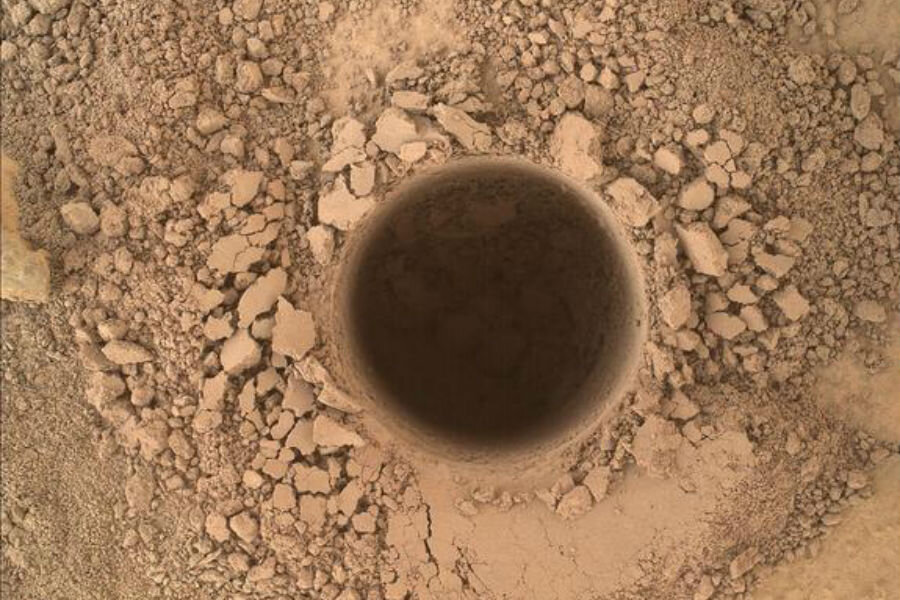Curiosity takes its first bite out of Mars' mountain
NASA's Mars rover Curiosity has taken its first bite out of the giant mountain that it crossed interplanetary space to explore.
On Wednesday (Sept. 24), the 1-ton Curiosity rover drilled 2.6 inches (6.7 centimeters) into an outcrop at the base of the towering Mount Sharp, which rises 3.4 miles (5.5 kilometers) into the Martian sky. Curiosity collected samples of powdered rock, with the aim of delivering them to the rover's onboard instruments for analysis.
"This drilling target is at the lowest part of the base layer of the mountain, and from here we plan to examine the higher, younger layers exposed in the nearby hills," Curiosity deputy project scientist Ashwin Vasavada, of NASA's Jet Propulsion Laboratory (JPL) in Pasadena, California, said in a statement. "This first look at rocks we believe to underlie Mount Sharp is exciting because it will begin to form a picture of the environment at the time the mountain formed, and what led to its growth." [Mars Rover Curiosity's Latest Amazing Photos]
Mount Sharp has been Curiosity's main science destination since before the rover's November 2011 launch. Mission scientists want Curiosity to climb up through the mountain's foothills, reading the rocks for clues about why Mars shifted from a warm, wet world in the ancient past to the cold, dry planet we know today.
Curiosity didn't head for the mountain immediately after touching down inside the Red Planet's Gale Crater in August 2012. Instead, Curiosity spent nearly a year examining rocks close its landing site.
This work, which included three separate sample-collecting drilling operations, paid off; the rover's observations allowed mission scientists to determine that the area harbored a stream-and-lake system billions of years ago that could have supported microbial life, if any existed there.
Curiosity started the 5-mile (8 km) trek to Mount Sharp in July 2013 and reached an outcrop at the mountain's base called "Pahrump Hills" last week. The arrival marked a major shift in the mission, which for the last 15 months had prioritized making tracks to get to Mount Sharp.
"We're putting on the brakes to study this amazing mountain," said Curiosity deputy project manager Jennifer Trosper of JPL. "Curiosity flew hundreds of millions of miles to do this."
On Monday (Sept. 22), the rover test-drilled a target rock on Pahrump Hills to gauge its suitability for sample collection, NASA officials said. That trial went well, so the mission team went ahead with a full-on drilling operation on Wednesday.
The mission team will soon deliver the powdered sample to Curiosity's open scoop, where they can observe it to determine if it's safe to send along to the rover's internal instruments, which are known as SAM (Sample Analysis at Mars) and CheMin (Chemistry and Mineralogy).
Follow Mike Wall on Twitter @michaeldwall and Google+. Follow us @Spacedotcom, Facebook or Google+. Originally published on Space.com.
- Curiosity's 'Road' On Mars: Where It's Been and Where It's Going | Video
- A 'Curiosity' Quiz: How Well Do You Know NASA's Newest Mars Rover?
- 7 Biggest Mysteries of Mars
Copyright 2014 SPACE.com, a TechMediaNetwork company. All rights reserved. This material may not be published, broadcast, rewritten or redistributed.








